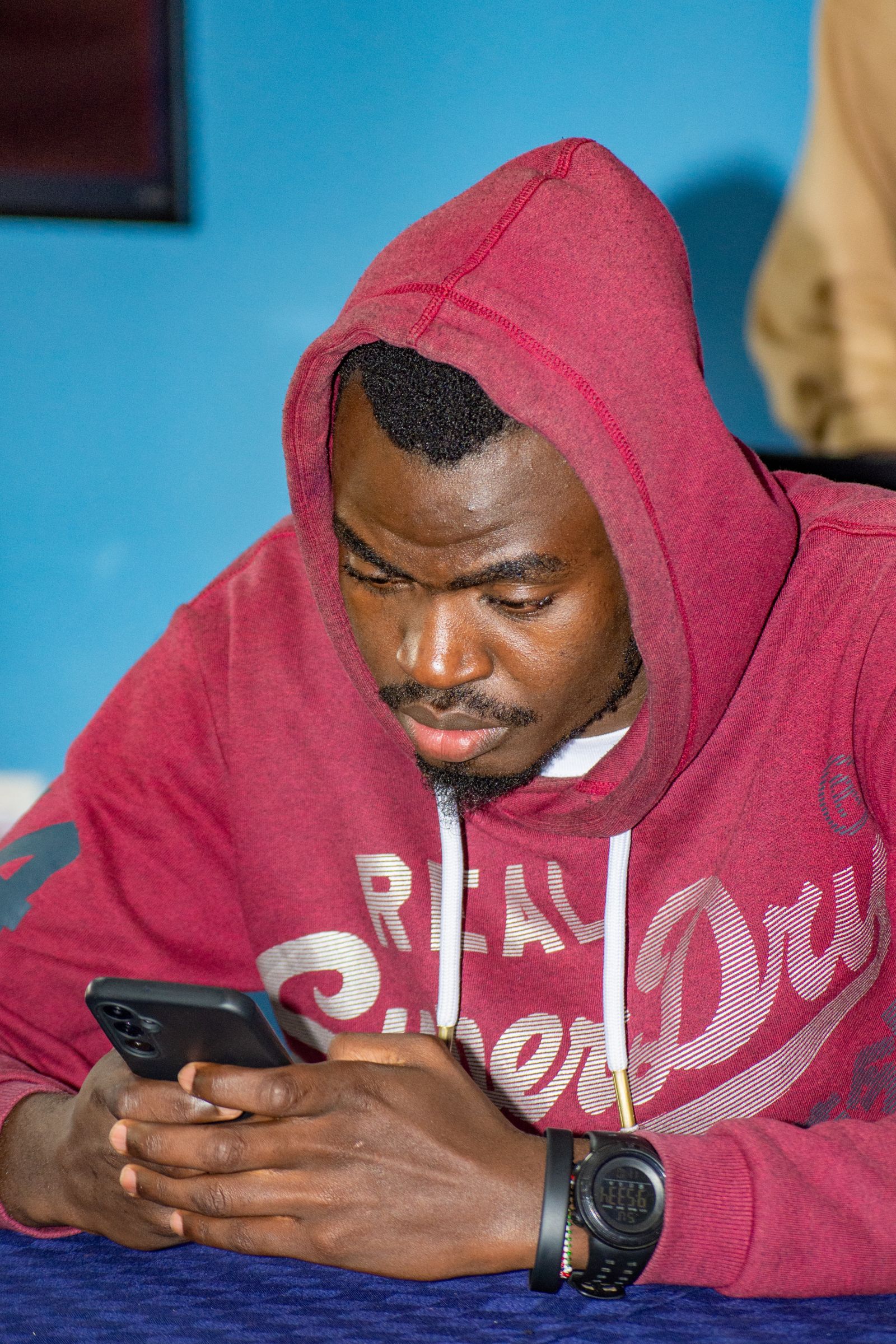
BASIC KNOWLEDGE AND INSIGHTS ON AI
Meshack Simiyu , Kenya Dec 08, 2025
The Unexpected Side of AI: What Most People Are Missing
Artificial Intelligence has become the loudest topic of our generation. Everyone talks about how it will take jobs, change industries, and reshape the future.
But beneath the noise, there are deeper, less obvious shifts happening—shifts that reveal how AI is actually transforming human potential, creativity, and even talent discovery.
Here are the unexpected insights about AI that most people overlook.
1. AI Isn’t Replacing People — It’s Replacing Skills
Most assume AI will eliminate entire professions.
The truth is more subtle: AI replaces tasks, not humans.
A photographer may lose the editing workload to AI,
but their creativity, personality, and eye for detail become more valuable.
A coach may automate analysis, but their leadership becomes priceless.
AI shifts value from task-based work to human-based value—empathy, creativity, coordination, storytelling, and presence.
2. AI Is Becoming a Mirror, Not Just a Machine
As models become more personalized, AI increasingly reflects:
-
your writing style
-
your thinking patterns
-
your decision-making habits
-
your strengths and weaknesses
It’s like having a cognitive mirror in your pocket.
People using AI daily become more self-aware because the AI surfaces things they didn’t notice about themselves. This is the true superpower of modern AI.
3. AI Will Transform Talent Discovery — Especially in Sports
One of the most surprising areas AI will revolutionize is talent identification.
Soon, AI will analyze:
-
movement patterns
-
consistency
-
reaction speed
-
fatigue levels
-
performance under pressure
-
hidden potential
A player from a remote high school will be discoverable without attending national tournaments.
The future of talent scouting is data-driven, and platforms like GFF stand in a perfect position to lead this evolution—identifying rising athletes long before traditional systems notice them.
4. AI Is Often More Creative Than Logical
While many believe AI is a logical machine, the opposite is becoming true.
AI is better at:
-
idea generation
-
content creation
-
rewriting styles
-
imagining possibilities
And weaker at:
-
long-term planning
-
consistent reasoning
-
complex real-world logic
In other words, AI is more like a brilliant artist than a perfect mathematician.
This flips the common assumptions upside down.
5. AI Is Quietly Becoming a Wellness Tool
AI is now being used to detect:
-
burnout
-
stress patterns
-
mood shifts
-
cognitive fatigue
-
emotional tone
Your phone will soon know you're stressed before you know it.
Workouts, rest, breathing sessions, and nutrition advice will become AI-personalized.
Fitness isn't just physical anymore—it’s emotional, mental, and data-driven.
The wellness world will be transformed.
6. Humans Using AI Will Always Outperform AI Alone
A mediocre writer becomes good with AI.
A good writer becomes great.
And a great writer becomes unstoppable.
This new category—AI-augmented humans—will dominate future industries.
It’s not a battle between humans and AI.
It’s a partnership where each side amplifies the other.
7. The Next Big AI Revolution Is Emotional Intelligence
Forget AGI for a moment.
The next real shift will be AI that:
-
understands tone
-
reads your emotions
-
adapts to your stress
-
maintains long-term context
-
motivates, supports, and encourages you
AI won’t just think with you—it will feel with you.
This is where everything changes.
Final Thought
AI isn’t here to replace us.
It’s here to amplify us.
To make us stronger, more aware, more creative, and more capable than ever before.
The people who thrive in the AI era won’t be the ones who fear it—
but the ones who learn to work with it, grow with it, and let it elevate their natural gifts.
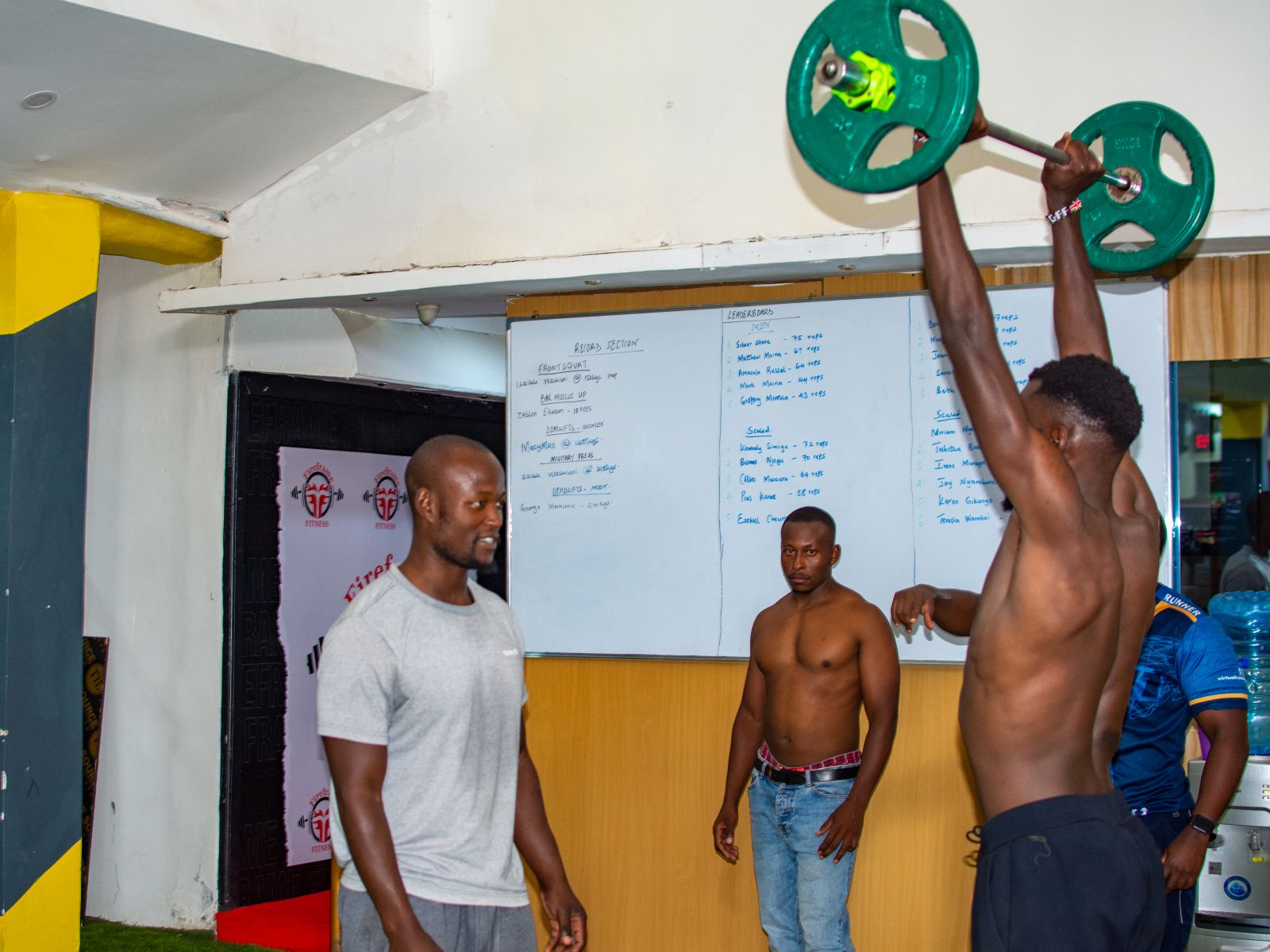
Why Every Athlete Needs a Fitness Routine?
Meshack Simiyu , Kenya Nov 30, 2025
Why Every Athlete Needs a Fitness Routine
Athletes are often celebrated for their talent, speed, and skill. But behind every winning moment—whether it’s a powerful forehand in table tennis or a knockout punch in the boxing ring—there is something deeper holding everything together: a consistent fitness routine.
At Global Fast Fit (GFF), we have seen how structured fitness changes the game for athletes at every level. It’s not just about training harder; it’s about training smarter. Here’s why every serious athlete needs a fitness routine that goes beyond their sport-specific drills.
1. Fitness Builds the Foundation for Performance
A disciplined fitness routine gives athletes the physical capacity to perform at their peak. Strength, agility, stamina, balance, and flexibility all come from deliberate fitness work.
Sport skills are important, but fitness creates the engine that powers them.
2. It Reduces Injuries and Extends Athletic Life
Many injuries in sports come from weak muscles, poor mobility, or overworked joints.
A balanced fitness routine—like the GFF model that combines conditioning, mobility, and core workouts—ensures the body is well prepared and protected. This means fewer injuries and more years competing.
3. Faster Recovery, Better Consistency
Athletes who follow proper routines recover faster from training and tournaments.
Good fitness programs include warm-ups, cooldowns, stretching, and strength phases that help the body repair and rebuild. This consistency is what separates champions from the rest.
4. Mental Strength Comes From Physical Discipline
Fitness is not only about the muscles. It trains the mind.
A routine teaches commitment, resilience, focus, and discipline—qualities every athlete needs. When you know your body is strong, your confidence naturally grows.
5. Fitness Helps Athletes Adapt to Different Challenges
From long tournaments to sudden schedule changes, travel, and tough opponents—fitness prepares you for the unexpected. A well-trained body responds better to stress, fatigue, and pressure.
This is why GFF emphasizes functional fitness that supports all sports, including table tennis, rugby, swimming, boxing, and more.
6. Fitness Unlocks a Higher Level of Skill
A fit athlete moves faster, reacts quicker, and thinks clearer.
Whether it’s footwork in table tennis, speed in rugby, or coordination in swimming, fitness amplifies every skill an athlete already has.
Conclusion: Fitness Is Not Optional — It’s the Secret Weapon
Every athlete—beginner or elite—can reach a higher level with a structured fitness routine. At Global Fast Fit, we continue to prove that a strong body builds a stronger athlete.
Fitness is the bridge between potential and performance.
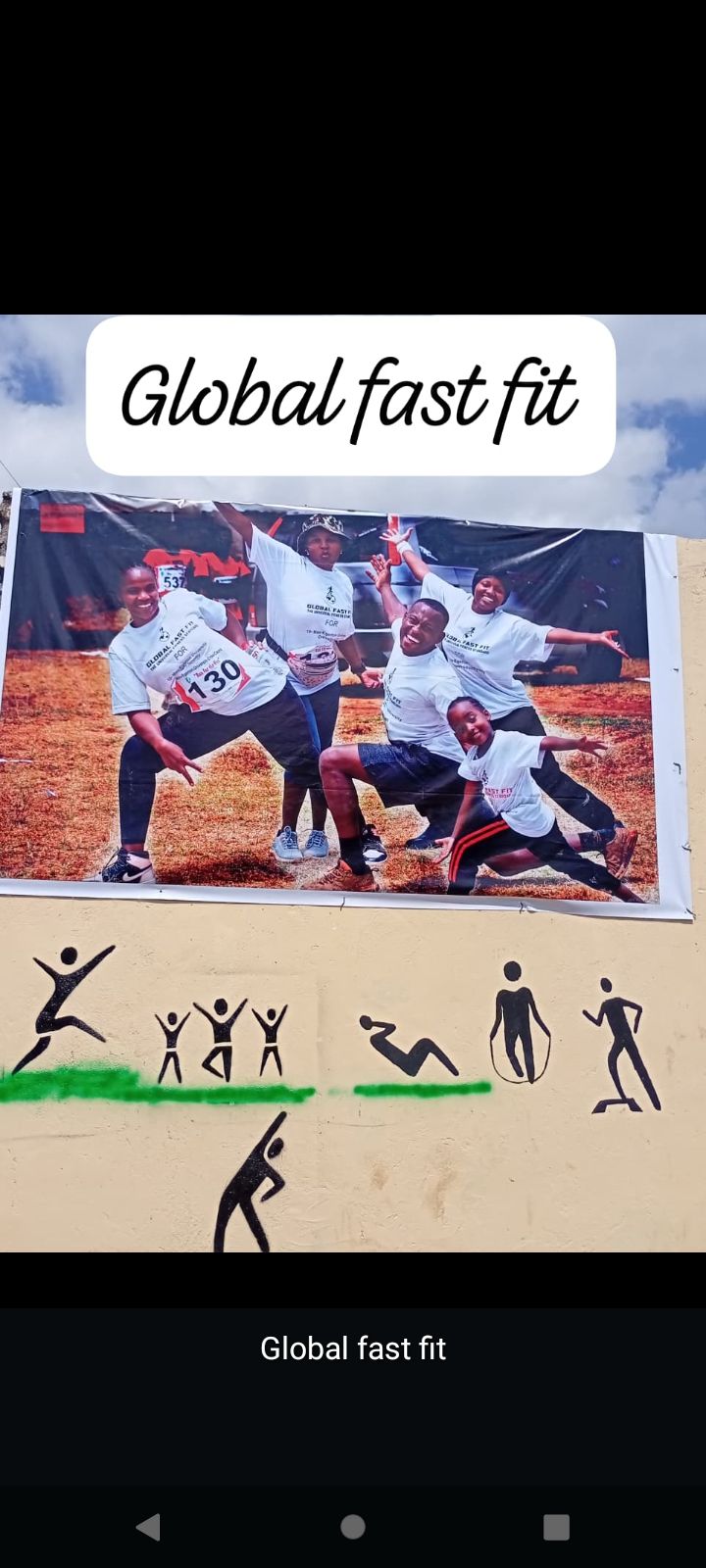
I HAVE NEVER MADE IT ON A BILLBOARD.....BUT THIS ONE COMES PRETTY CLOSE
Kelvin Njihia Kairu , Kenya Nov 29, 2025
When I first imagined seeing myself on a billboard, It felt like something only reserved for celebrities, influencers or people with far more confidence in front of a camera than myself. While I have not made it to an actual billboard, something exciting happened recently that feels just as surreal: I appeared on a poster and canvas display for our fitness company, Global Fast Fit.
Being part of the Global Fast Fit campaign reminds me of how far I have come, not just physically but also mentally. I used to think that those kinds of moments are for other people but I now realize they are for anyone willing to step into the purpose and say yes to opportunities , even the unexpected ones. It only takes one picture, you never know which it is.
So no, I have not appeared on a giant billboard yet but seeing myself on that poster felt like a reminder that big things often start wiyh smaller, meaningful milestones. and if this is just the beginning, I can't wait to see what's next
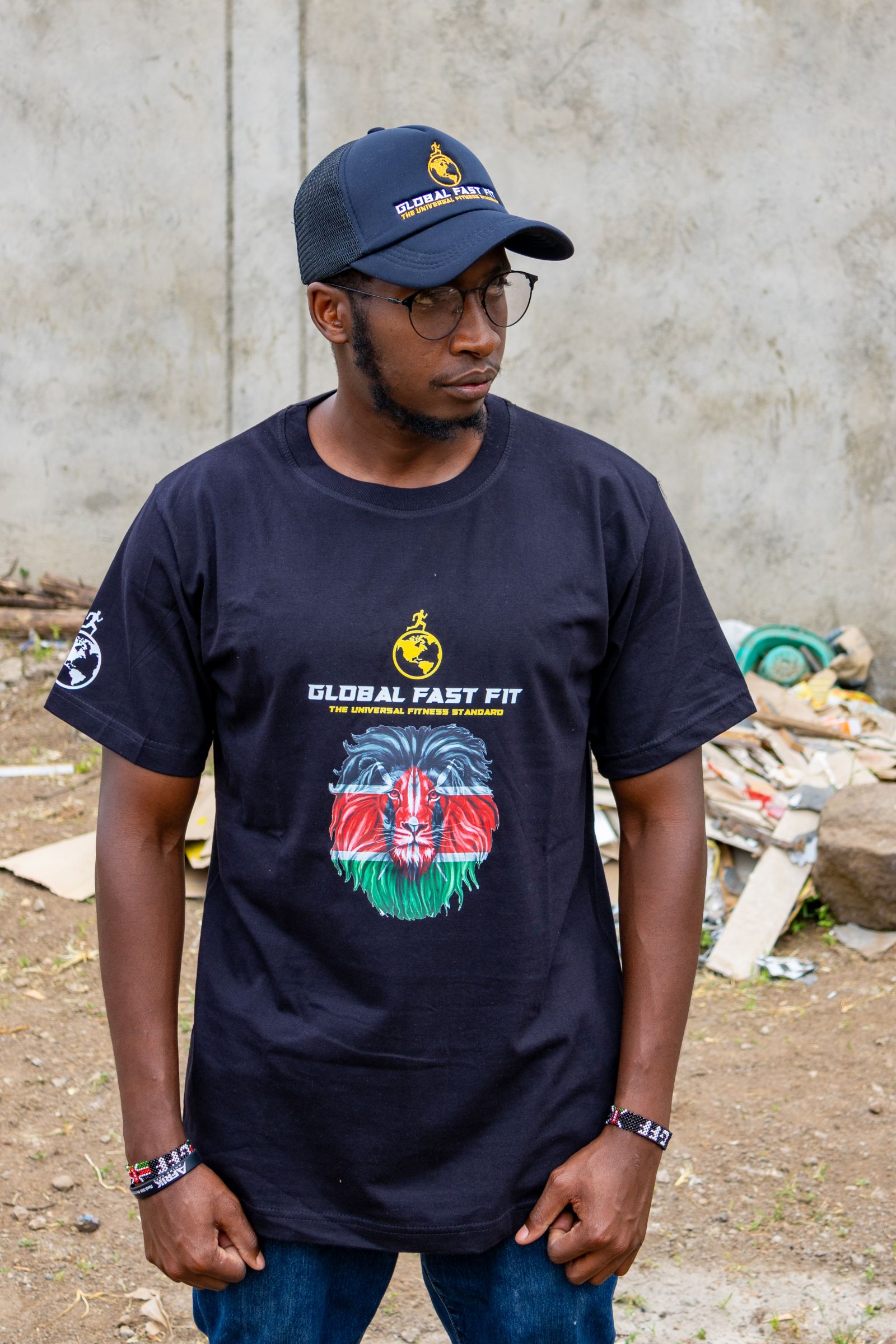
Advancing My Career with Global Fast Fit
Simon Njuguna Muchiri , Kenya Nov 28, 2025
When I graduated from campus four years ago, I walked out of the gates with a fresh degree in Procurement and Logistics Management and a heart full of ambition. Like many graduates, I imagined jumping straight into a career that matched my specialization. Life, however, had different plans.
I eventually found myself working with Global Fast Fit-a space centred around health, fitness, community, and impact. It was a world far from what I had pictured for myself academically. Over time, I settled into the rhythm of the work, slowly convincing myself that my degree would become just another framed document on the wall. Interesting, but irrelevant.
I was wrong.
Earlier this year, everything shifted. I was asked to take charge of logistics operations for GFF Kenya. The moment the announcement was made, something clicked. Suddenly, concepts I had studied years ago began resurfacing-procurement strategies, supplier management, cost analysis, quality checks, risk handling. It was as if my academic life had been quietly waiting for its cue.
And it didn’t stop there.
I was soon placed at the helm of one of the most exciting projects I’ve ever handled: the renovation and rebuilding of the GFF Wellness Centre in Lanet. This wasn’t just another building-this would become the national nerve centre for all GFF activities in Kenya.
From the very first day on-site, I felt the weight and thrill of responsibility. I inspected materials, negotiated with suppliers, coordinated labour teams, and ensured every step aligned with timelines and budgets. Beyond the technical work, there was the human side-mobilizing nomads, keeping the energy high, and taking ownership of the project.
Every task reminded me that skills don’t disappear; they simply wait for the right opportunity to shine. The long days in class, the endless notes, the group assignments-they were not wasted after all. They were preparing me for this moment.
Standing on that construction site, hearing the buzz of tools and seeing progress take shape brick by brick, I realized something profound: sometimes your path bends, pauses, or even detours, but it still leads you exactly where your strengths can thrive.
Working with Global Fast Fit hasn’t just advanced my career-it has reshaped my purpose. It has taught me that growth isn’t always loud or instant. Sometimes it happens quietly, in the background, until one day you’re finally given the space to rise.
And when that moment comes, everything you’ve learned-every skill, every lesson-finally makes sense.
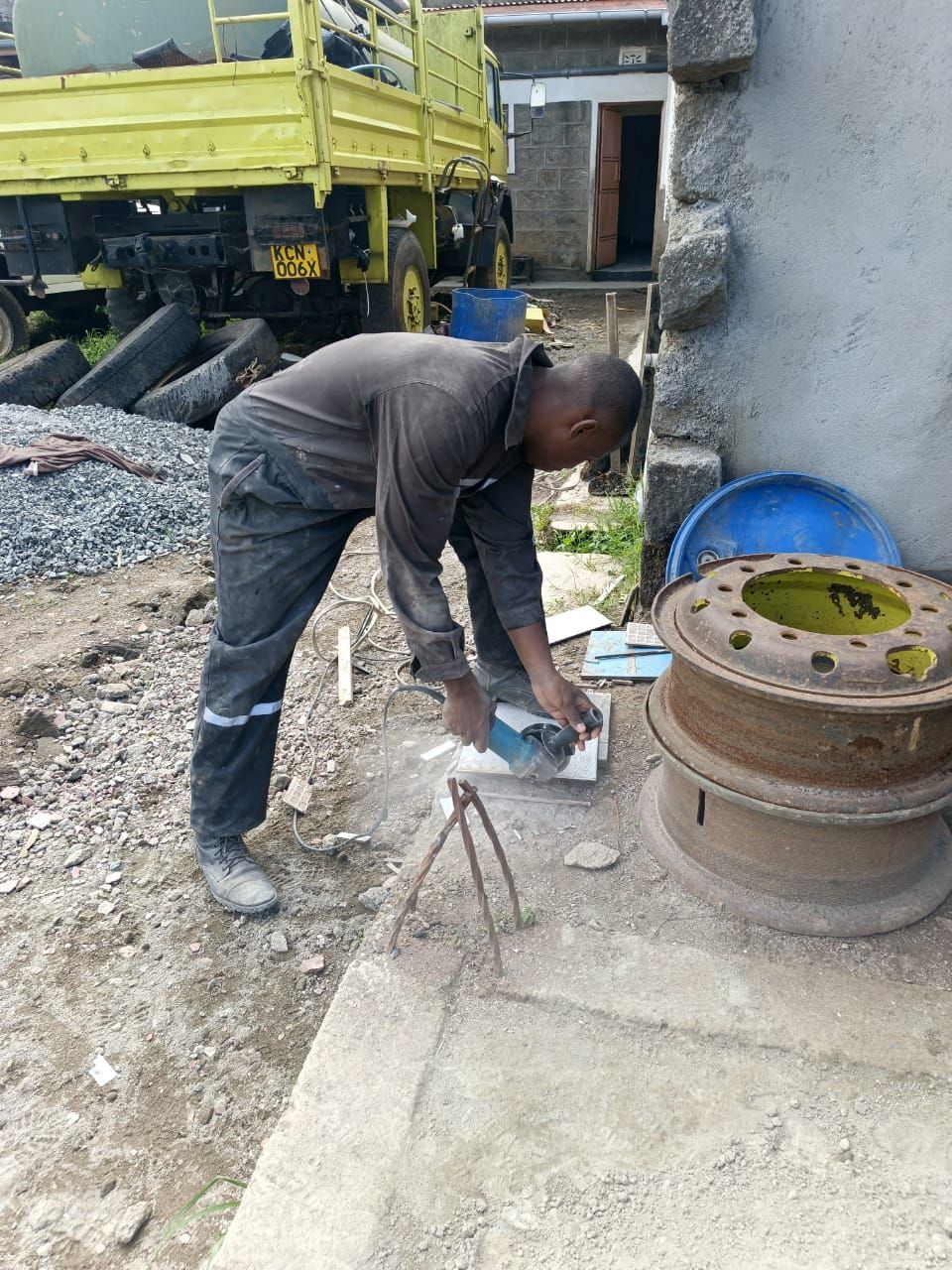
FROM WORKOUTS TO WORK BOOTS
Kelvin Njihia Kairu , Kenya Nov 24, 2025
At Global Fast Fit, we are used to lifting weights, counting reps and talking about muscles groups. Lately, things have taken a twist. Instead of building bodies, we have been building the actual Global Fast Fit wellness Center in Lanet. It is sill under construction, still messy , still noisy-but honestly, that's part of the journey
Starting With The Basics
One of the person who has been guiding us is Dr James' father. He is a retired civil engineer and the kind of person who can look at a wall and immediately see where things should and shouldn't go. The first thing he taught us wasn't how to use a tool-it is how to think.
Plan first. Don't rush. Know why you are doing something before you do it. Simple things, but they really change how you approach work.
Safety First Even When It Looks Easy
Before touching anything first, we went over safety. Things like wearing shoes, checking where to place your fingers when using the grinding machine( of course, losing fingers ain't cool) and never assuming the next person knows what you are about to do. These small habits matter.
Demolition Is Not Just Breaking Stuff
I thought demolition meant smashing things. It's really not. It's controlled , slow and kind of strategic(That's where the engineer came in). There is a way to take things down so you don't create bigger problems later. I learnt how to remove sections without damaging the rest of the structure. It's extremely satisfying when you get it right
Learning The Grinder
The grinding machine was scary at first. It vibrates, it makes noise and it can slice anything. But with guidance, I learned to go slowly, keep steady and check progress as I cut. Once you get it, it's actually smooth
Mixing Sand, Cement and Water
Most of hat I have learnt has been from Sammy, the lead foreman. We spend most time with him, and honestly, he has the patience of ten people combined.
He is the one who has taught us how to mix sand, cement and water properly. Initially, I thought you just mix until it looks right but that is not the case. Turns out there is a method. Too watery and it's useless, too thick and it doesn't bond.(Where did he learn his masonry? Prison. Long before I was even born. Story of another day)
Tiling And Grouting
Tiling was another lesson. Keeping the lines straight, checking the level, spacing the tiles- it's detailed work. Sammy does not get tired of answering questions even if you ask twice or thrice. After tiling, there was grouting, which takes more patience than I expected but once done and you step back, the results feel worth it.
Cleaning Up And Calling It A Day.
A big part of construction is cleaning. Sweeping, cleaning and organizing the tools. It is not the glamorous part, but it makes the next day easier. Each day I leave a little bit dusty, a bit tired, but always having learned something practical.
What I am Taking From All This
The center is not yet completed yet, but I have picked up skills I did not expect to learn. Planning, precision, tool using, asking questions and being open to learning by doing. I did not go into this thinking that I would enjoy construction, but I actually do. Maybe because the people who are teaching us genuinely know their stuff and don't mind sharing it.
A Different Kind Of Fitness
At Global Fast Fit, we are usually building bodies This time, we are building the space that will help people build those bodies. It has been a different kind of workout-one involving dust, tools and a lot of guidance- but honestly, I am glad I have been part of it. Let's wait and see how the center unfolds. Honestly, I think it will be a great space
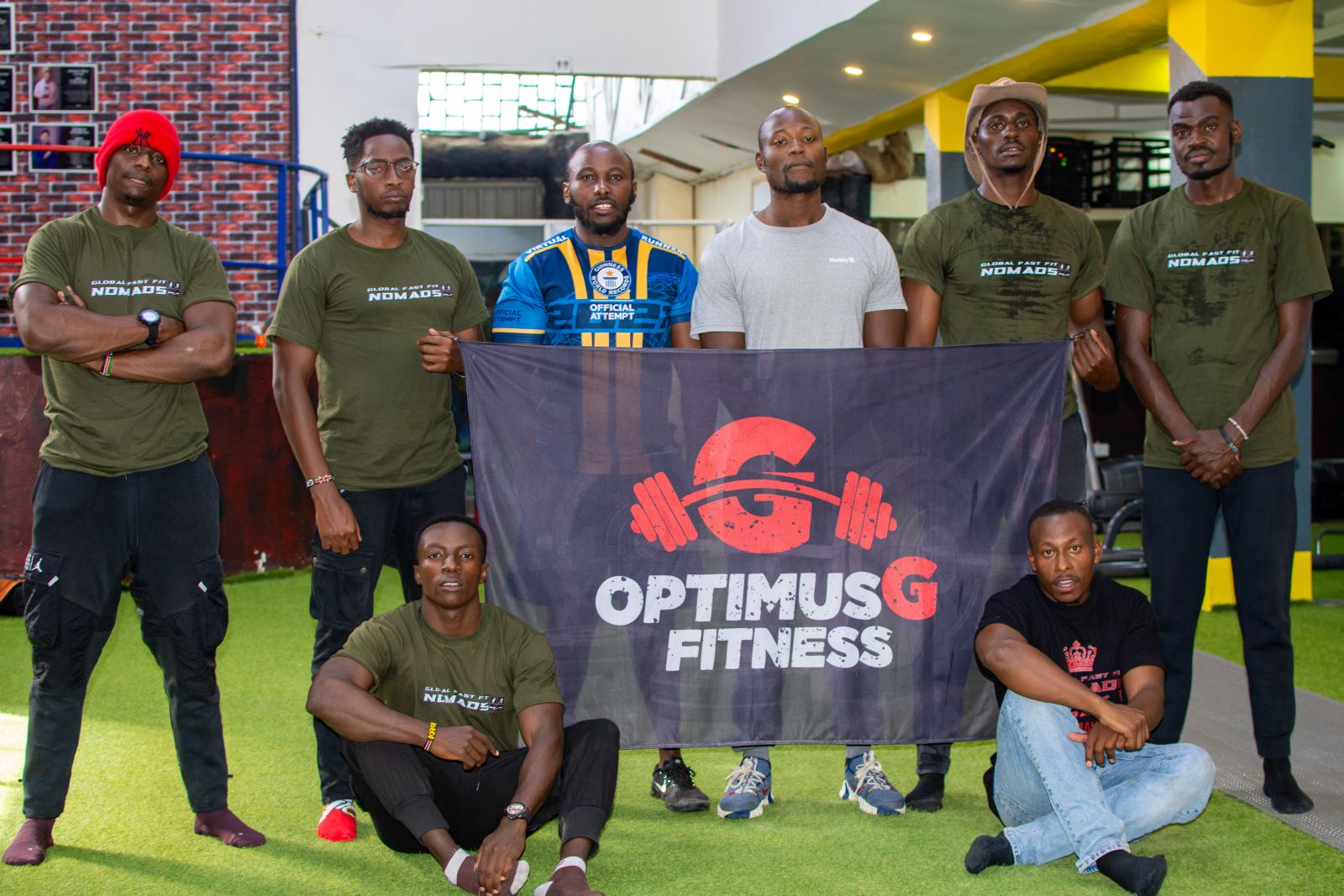
How Global Fast Fit Continues to Support and Grow Talent in Kenya 🇰🇪
Meshack Simiyu , Kenya Nov 23, 2025
How Global Fast Fit (GFF) Continues to Support and Grow Talent in Kenya
In every community, talent is like a seed — it needs the right soil, the right support, and the right environment to grow. Global Fast Fit (GFF) has become that environment for many young athletes across Kenya. Through mentorship, exposure, and structured programs, GFF is steadily shaping the next generation of sports and fitness champions.
A Platform Built for Growth
GFF goes beyond fitness routines. It has created a system that identifies raw talent, nurtures it, and provides meaningful opportunities for athletes to shine. Whether it’s in boxing, rugby, table tennis, or fitness leadership, GFF ensures that emerging athletes feel seen, supported, and empowered.
The initiative works closely with clubs, institutions, gyms, and communities — ensuring that talent at the grassroots level is not overlooked. From sponsoring athletes to providing training avenues and creating competitive opportunities, GFF proves that talent grows best with intentional support.
My Journey as a Table Tennis Player Supported by GFF
As a passionate table tennis player and coach, my journey has been shaped in a big way by GFF. Their support has opened doors that I never imagined. Through GFF, I have gained:
Exposure through travel, coaching sessions, and tournaments
Mentorship from fellow athletes and GFF trainers
Resources that have strengthened my training and community outreach
A platform to inspire young athletes through table tennis clinics and events
With GFF behind me, I am not only growing as an athlete but also using my skills to help the organization bring sports, fitness, and motivation to schools, institutions, and local communities.
Opportunities That Make Athletes Believe Again
GFF’s support does not end with individual athletes. The program creates a ripple effect — when an athlete grows, they uplift others. By offering:
Fitness camps
Sponsored sport events
Mentorship programs
Content creation support
Cross-county and cross-border exposure
GFF ensures that every young athlete has a chance to discover their potential and pursue excellence.
Building a Culture of Talent and Wellness
What makes GFF special is its blend of fitness, community, and opportunity. It’s not just about winning medals — it’s about building confident, skilled, and empowered individuals who inspire others.
From the local gyms of Nakuru to national tournaments and even international collaborations, GFF keeps proving that talent multiplies when it is nurtured.
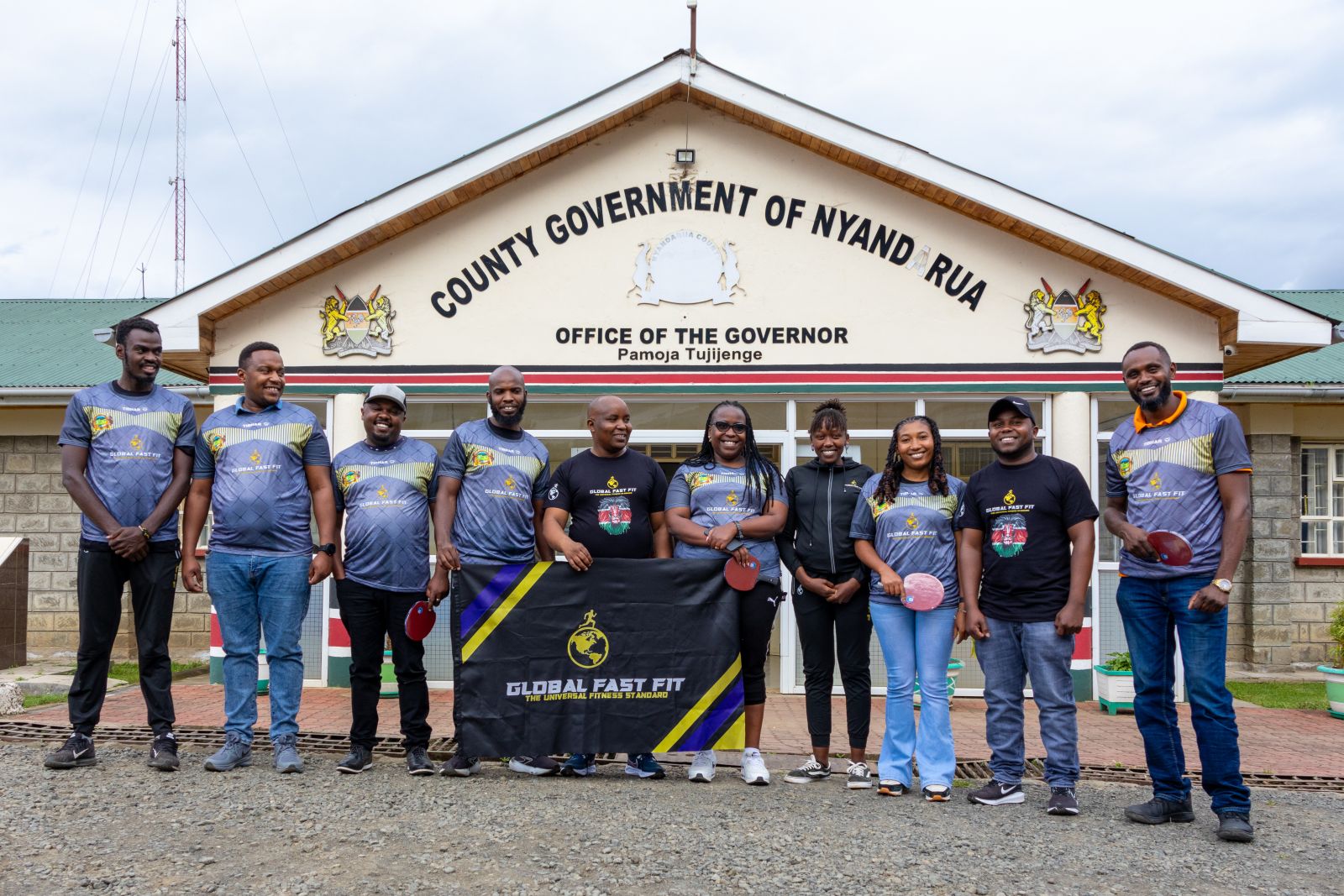
BREAKING NEWS! Global Fast Fit and Nyandarua County Ministry of Youth and Sports Affairs Collaborate on Future of County Athletics
S. Sean Suvanadesa , Thailand Nov 17, 2025

The GFF Effect: Discovering Greatness in Kenya’s Youngest Athletes
Simon Njuguna Muchiri , Kenya Nov 16, 2025
Who is an Athlete? An athlete is not simply someone who runs fast, jumps high, or lifts heavy. An athlete is a person who dares to push their limits-someone who willingly steps into discomfort in pursuit of a version of themselves that ordinary effort could never create. For some people, this capacity seems to come naturally. For others, it must be discovered, shaped, nurtured, and guided. But regardless of how it begins, athletic potential lies quietly in many hearts, waiting for the right moment-and the right mentor-to awaken it.
When Global Fast Fit was introduced in Kenya, no one could have predicted the magnitude of the impact it would have, especially on children. And among the very first symbols of this impact was a little girl many people barely knew: Anita.
At just four years old, Anita was introduced to the GFF routine by her uncle, Kairu, who saw something extraordinary in her. While most children were still learning coordination, she was mastering movements, counting reps, and showing discipline that surprised even adults. At five years old, she did what many grown athletes struggle to achieve-she completed a verified GFF standard routine. She didn’t just complete it; she excelled, outperforming numerous adults who had been training longer than she had. It’s easy to forget she was barely out of preschool. Today, at six, newly graduated to grade one, her journey is only beginning. She carries the pride of being the GFF Mascot, but beyond that, she carries the promise of a bright, limitless future.
But Anita is not the only star rising quietly;
In the same school, in the same grade, in the same age group, there was another child whose talent was hidden in plain sight-Ethan. He was soft-spoken, almost unnoticed, until one day during a GFF-sponsored music class, a teacher handed him a flute. What happened next shocked everyone. The notes flowed not like something he was learning, but like something he had always known. No one expected him to master it so quickly, let alone stand on a national stage and win the National Music Festivals in his category. Yet he did-proof that talent does not ask for permission before revealing itself.
These two incredible children—one in athletics, one in music—carry a deeper message.
Talent is Everywhere. Opportunity is Not.
Kenya is full of gifted children in classrooms, playgrounds, churches, and remote villages. Some can run. Some can draw. Some can lead. Some can build. Some can think with remarkable sharpness. But the world may never know their names if no one takes the time to look closely.
What Anita and Ethan show us is simple yet powerful:
Talent needs a witness.
Potential needs a mentor.
A dream needs someone who believes in it before it is fully visible.
If Kairu had not believed in Anita at four years old, we might never have seen her shine. If the GFF-sponsored music classes had not existed, Ethan might never have touched a flute. These moments—small, ordinary, easily forgettable—are the sparks that ignite greatness.
There are many more “Anitas” and “Ethans” among us. Children waiting to be noticed. Talents waiting to be guided. Futures waiting to be shaped.
The question is: Are we paying attention?
Are we creating opportunities?
Are we mentoring deliberately?
Because every athlete starts as a child with curiosity. Every champion begins as someone who just needed a chance. And every great story begins with someone who believed early enough.
The future of Kenyan athletics, music, art, innovation, and leadership is already among us-walking to school, playing in the dust, humming in class, skipping rope in the yard. All they need is someone to spot the spark and gently fan it into a flame.
Talent is not rare. Mentorship is.
And that’s where the difference is made.
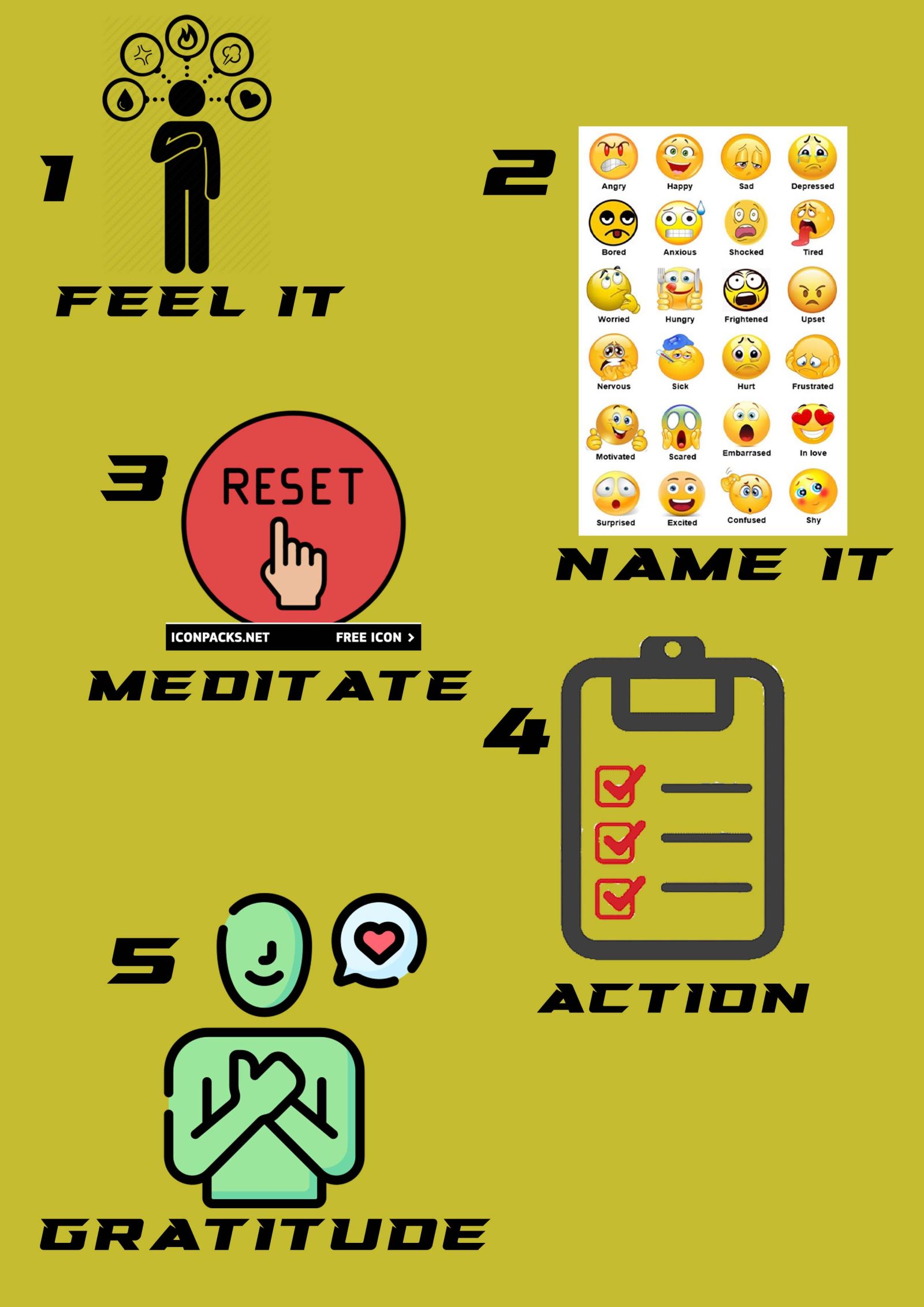
The gentle art of getting by.
Abigael Rotich , Kenya Nov 12, 2025
There is always a day that is straight from the pits of hell. Nothing seems to work, anything that can go wrong, does go wrong. You find yourself in a funky mood.
This affects your productivity because your brain activates your emotional alarm system and switches off the part of your brain that handles planning, focus and decision making. This way, you start to self protect and react instead of thinking clearly.
Cortisol and adrenaline rise when you are in emotional distress. They make you anxious and jittery. These are great for running away or fighting but not good for concentration. Your working memory fills up with emotional clutter, replaying thoughts of regrets and worries, leaving less space for tasks or creativity. In this state, even small tasks feel difficult because your brain is using energy to try and calm you down. You are tense, you feel low, your attention splinters, you second guess yourself, you rush or procrastinate tasks. All this affects your productivity.
This is a fast track to composure on demand.
-
Feel your feelings.
There are no right or wrong emotions. People who accept their negative emotions without judgment experience lower levels of anxiety and depression over time. This is because acceptance interrupts the cycle of suppression → rebound → intensified emotion. Instead of wasting energy fighting feelings, the body calms down faster. When you hide anger or sadness, the threat detector in your brain stays activated — the body thinks danger is ongoing. Accept any emotion and sit in it for just a moment.
-
Verbalize the emotion
Give a name to what you are feeling and what you want to feel. Give multiple names to what you are feeling. Simply naming a feeling (“I feel angry,” “I feel sad”) reduces activity in the emotional centers in your brain and increases activity in the brain’s calm, logical control center. Go further and verbalize what you want to feel. This process is called affect labelling. You calm the emotional brain by turning sensations into language.
-
Meditate
Breathe, ground, and center yourself. Meditation can range from a few minutes to hours. This is a 5 minute reset guide that you can use on the go.
Step 1: Physical release
-
Stand up.
-
Inhale deeply through your nose for 4 seconds, exhale forcefully through your mouth.
-
Roll your shoulders back and down, stretch your arms wide, shake out your hands.
-
If you can, do 20 jumping jacks, jog in place, or just swing your arms and legs loose.
Step 2: Ground and reset
- Sit down and place your bare feet flat on the ground or floor.
-
Inhale slowly for 4, hold for 2, exhale for 6.
-
Name 5 things you can see, 4 you can touch, 3 you can hear, 2 you can smell, 1 you can taste.
This brings you back to the present moment and helps your nervous system settle.
-
Act
Take one calm, deliberate action. This will refocus your mind.
“What is one thing I can do right now that would make the rest of my day/night feel easier?”
Pick just one—maybe replying to one message, finishing a small task, or starting a playlist and tidying your workspace. Once you start, momentum will build.
-
Gratitude: A natural antidepressant.
End with appreciation for what’s steady and good. Gratitude rewires the brain to notice the abundance instead of lack. Just like love, gratitude is a practice.
Gratitude as a practice is one of the most studied emotional habits in psychology, neuroscience, and even physiology. Gratitude activates the part of the brain involved in processing reward, empathy, and emotional regulation. Regular practice trains the brain to scan for positives instead of threats. Gratitude activates the same brain regions as pleasure, trust, and reward. This triggers dopamine and serotonin release, the same neurotransmitters targeted by antidepressants.
Over time, a gratitude habit creates new neural pathways that make it easier to feel content and balanced. In all seasons, gratitude acts as a mental anchor. It doesn’t deny hardship — it adds balance by reminding the mind of what’s still working, still present and still beautiful.
The practice of gratitude.
-
Grab a piece of paper.
Any page will do — a notebook, journal, or even a loose sheet. Keep it simple and accessible. -
Write down 8 things you’re grateful for.
Don’t overthink it.
Include anything that brings you comfort, joy, or relief — big or small. It could be; your mother’s love, a delicious cup of tea, a peaceful moment alone, or even a really good bowel movement!
Gratitude is about presence, not perfection.
-
For each item, add a short explanation.
Just a line or two about why you’re grateful for it.
-
End each line with the phrase:
“I am very grateful for…” -
Read your list out loud when you’re done.
Feel the warmth, calm, and appreciation settle in.
-
Keep your gratitude notes private.
This is your secret practice, just for you.
Never let anyone read your notes — not because they’re shameful, but when you know someone might see them, you risk becoming performative, writing what sounds good instead of what feels true. Honesty is what gives this practice its healing power.
Keep your notes safe. Fold them away. Hide or even burn them later if you wish.
What matters most is that they are real, not polished.
Examples;
“I am grateful for the warm shower that I had today. I have always loved taking baths. I am grateful that I have a hot shower and plenty of water.”
“I am grateful for my home. A lot is going on in the country right now and so many people have lost their homes and a lot more to floods. I have my home intact. I am very grateful for this.”
“I am very grateful that my son’s eczema is contained. It was a source of anxiety for me but now he is well. I am very grateful for this.”
“I am so grateful for my life now. I am just starting to live for myself and I am loving it. I am stepping into the spotlight as the main character of my life and it feels like a breath of fresh air, unlike this paper which smells like cat pee.”
No day is too messy, no emotion too strong. With feeling, naming, grounding, acting, and gratitude, you have the tools to reset your mind, calm your body, and reclaim your focus — anytime, anywhere.
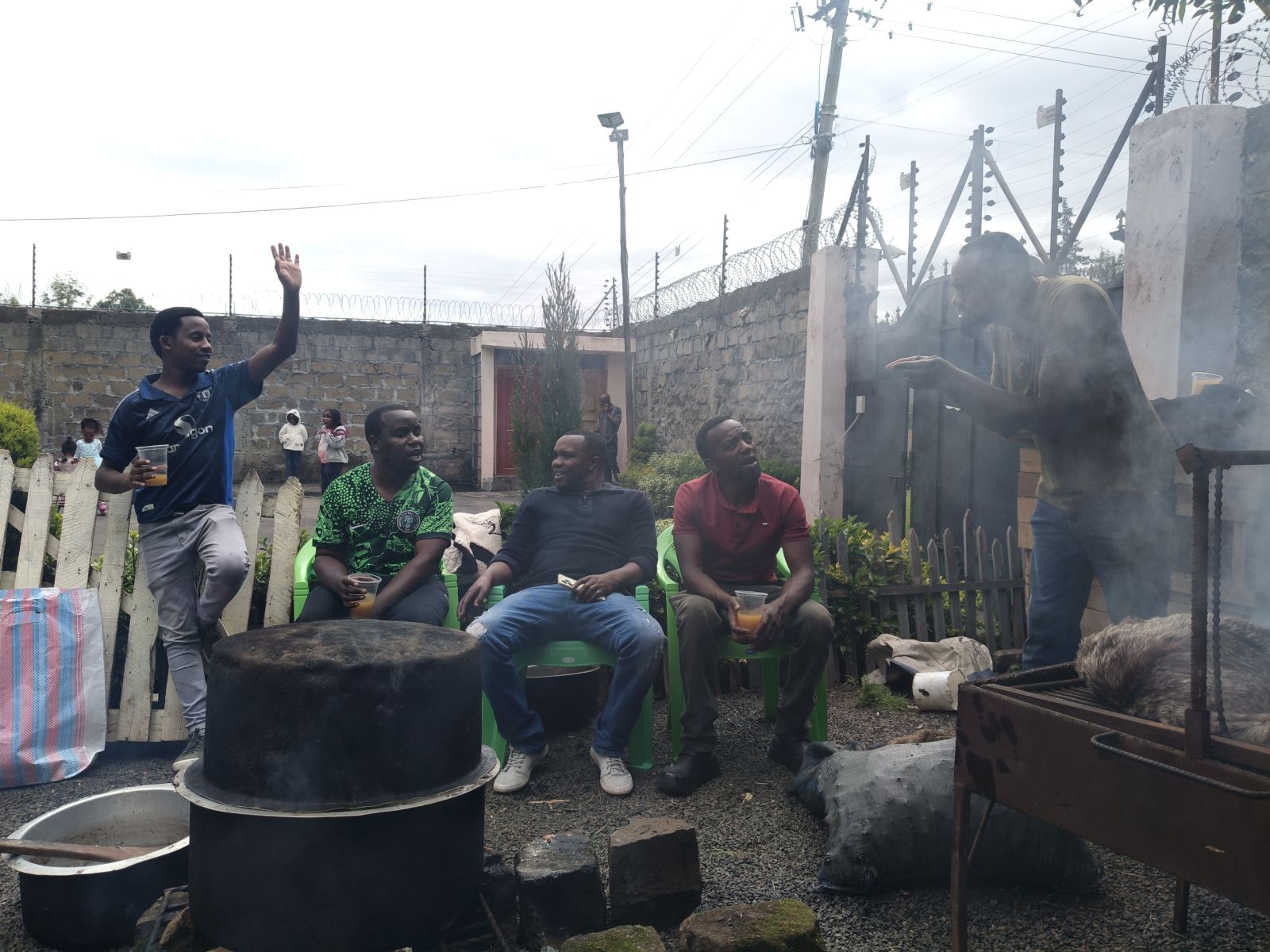
The Original Gender Reveal
Dr. James Muchiri , Kenya Nov 11, 2025
(Dedicated to the little warriors whose cry called us to ululate once more.)
We recently gathered in a friend’s house for one of those beautiful men’s moments — laughter, stories, and that quiet pride that fills the air when one of us becomes a father.
There was music, warmth, and, of course, muratina — that sacred nectar that turns ordinary talk into the kind of wisdom that only makes sense when the gourd has gone halfway down.
And somewhere between the laughter and the sip, it struck me — how beautiful the original gender reveal used to be.
Before the Balloons and the Powder
Today, gender reveals are an explosion of pink and blue. Cakes hide secrets, balloons burst into confetti, and someone always catches it all on camera. It’s fun, dramatic, even spectacular.
But before the colors, before the cameras and countdowns, our people had their own way.
They didn’t use balloons — they used breath.
They didn’t need fireworks — they had voices.
When a child was born, the community didn’t wait for a post — they listened.
If you heard four ululations, a girl had arrived.
If you heard five, a boy had been born.
But those ululations — ngemi — were not just about gender.
They were blessings sung through rhythm, virtues spoken in sound.
Four for the Girl
The girl’s four ululations, ngemi inya cia kairitu, formed a complete circle — a song of balance.
Each sound carried a virtue:
-
Uthamaki – Leadership: The ability to govern oneself and others with fairness and grace.
-
Ugo – Healing: The power to mend — to restore harmony in body, spirit, and community.
-
Urathi – Prophetic Insight: The divine ability to see beyond the visible — to discern seasons and speak truth before it unfolds.
-
Utonga – Wealth: Abundance of spirit and substance — the capacity to create, sustain, and share life.
The four ululations formed the full measure of inner strength — completeness, balance, and harmony.
Five for the Boy
The boy’s ngemi ithano cia kahii carried the same four virtues, but added a fifth — the one that sent him beyond the walls of home.
-
Ucamba – Bravery: Courage, endurance, and the will to defend what is right and true.
That fifth ululation was the outward call — to protect, to explore, to build, and to extend the legacy.
To the Little Warriors
And so, to the little warriors — within and beyond the Global Fast Fit circle — whose coming stirred our hearts:
Go forth, be a Prophet — bring light to your generation.
Go forth, be a King — govern with fairness and humility.
Go forth, be a Healer — mend what is broken in body and spirit.
Go forth, be a Wise Man — preserve harmony through understanding.
Go forth, be a Warrior — stand firm, protect, and lead with courage.
Five ululations were sounded for you — not just to announce your birth, but to proclaim your destiny.
The Beauty of the Old Ways
When I think of today’s gender reveals — the confetti, the colored smoke, the cheers — I smile. They’re joyous, yes, but they only reveal what the child is.
Our ancestors revealed who the child was meant to become.
They didn’t say, “It’s a boy” or “It’s a girl.”
They said, Here comes one who will lead, think wisely, see truly, prosper deeply, and stand bravely.
That was the original gender reveal — not of color, but of character.
And as for the muratina — that story deserves its own day.
I’ll tell you about it next time.
 Login with Google
Login with Google
 Signin with Apple
Signin with Apple